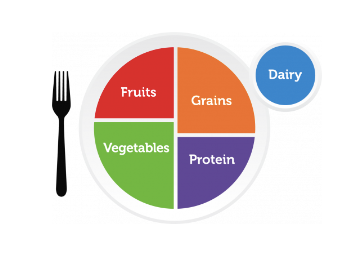In our fast-paced world, it’s easy to overlook the importance of nourishing our bodies and minds with healthy foods. But the truth is, what we eat can drastically affect our physical health, emotional well-being, and overall quality of life. Adopting a healthy diet isn’t just about maintaining an ideal weight or preventing chronic diseases—it’s about treating our bodies with respect, fueling our daily activities, and enabling ourselves to live our lives to the fullest. Embarking on a journey towards healthy eating is a journey towards a better, more vibrant life.
We will discuss how to eliminate risk factors, avoid chronic disease, and eliminate the risk of heart disease as long as you want to live in a healthy body. Stay with us as we delve deeper into the significance of healthy eating and provide practical tips to make it a part of your everyday routine.
The Importance of Hydration
Just as vital as a well-balanced diet is, so is maintaining proper hydration. Water is the foundation of life and plays a crucial role in every function of our bodies. It aids digestion, keeps our skin glowing, lubricates our joints, and helps regulate body temperature. Dehydration, however, can lead to many health issues, from minor headaches and fatigue to severe conditions like kidney stones and heat stroke. Drinking sufficient water is as significant as eating healthily because it not only quenches our thirst but also nourishes our body from within. Remember, a journey to a healthier you is incomplete without the inclusion of ample hydration in your routine. So, raise your glasses (of water!) to a healthier, more invigorated you.
There is no clear-cut number for how much fluid one should intake daily. However, the U.S. National Academies of Sciences, Engineering, and Medicine determined that an adequate daily fluid intake is about 15.5 cups daily for men and about 11.5 cups (2.7 liters) of fluids daily for women. This covers fluids from water, other beverages, and food, as about 20% of daily fluid intake usually comes from food.
What Is Healthy Eating
The primary food groups form the cornerstone of a healthy, balanced diet. These groups comprise five significant categories: fruits, vegetables, proteins, grains, and dairy.
- Fruits can be fresh, canned, frozen, or dried, providing a wealth of essential vitamins and minerals. Try to avoid processed fruit juice and aim for alternatives.
- Vegetables can be consumed in various forms and are packed with nutrients vital for overall health.
- Proteins are critical for building and repairing tissues and can be sourced from animals (like meat and fish) and plants (like beans and nuts).
- Whole grains contribute dietary fiber and give us energy.
- Dairy, including milk, cheese, and yogurt, is an excellent source of calcium and other essential nutrients.
The U.S. Department of Agriculture recommends the following food groups for a 2,000-calorie-a-day diet. You can access more information on their website.

Build a Healthy Plate: The Components of a Balanced Diet
When building a healthy meal, variety is the spice of life. A balanced diet should encompass several vital components. First and foremost are fruits and vegetables, packed with essential vitamins and minerals your body needs to function efficiently. Then come whole grains, providing fiber and complex carbohydrates for sustained energy. Lean proteins, like poultry, fish, legumes, or tofu, build and repair tissues, while healthy fats from avocados, nuts, seeds, and olive oil help your body absorb nutrients and maintain cell health.
Constructing a balanced meal isn’t just about the components but also the proportions. A simple guideline is ‘The MyPlate Model, recommended by the Department of Agriculture. Picture your plate divided into quarters. Fill half of it with varied fruits and vegetables, a quarter with lean proteins, and the remaining quarter with whole grains, like brown rice. Complement this with a serving of dairy or dairy alternatives for a balanced mix of nutrients.

Building a balanced diet doesn’t happen overnight. It’s a process, a habit that we cultivate over time. So, take small, manageable steps, add more color to your plate, swap unhealthy foods with whole foods whenever possible, and most importantly, listen to your body. Remember, the goal is not perfection but progress.
The Role of Whole Grains
Whole grains are the backbone of a balanced diet, serving as our bodies’ primary energy source. They are packed with complex carbohydrates that release sustained energy, unlike simple sugars that cause a quick energy spike and crash. Additionally, the fiber content in whole grains aids digestion and helps to maintain a feeling of fullness, thereby aiding in weight management. The essential vitamins and minerals in whole grains, such as B vitamins, iron, and magnesium, support various bodily functions like metabolism, immune system, and bone health. Eating different grain foods daily is a simple yet effective way to ensure you receive a broad range of nutrients crucial for overall health. Hence, whole grains are not just an element to be included in a balanced diet; they are central to creating one.
Understanding Portion Control
Portion control is a critical element in achieving a healthy diet. It’s not just about what you eat, but also how much you eat. Managing the quantities of food you consume can significantly impact your overall nutritional intake. Eating the right amount of nutrients not only fuels our bodies for optimal function but also helps avoid excessive calorie intake, which can lead to weight gain and associated health conditions.
Moreover, practicing portion control aligns with dietary guidelines and is a cornerstone of most dietary patterns, leading to a healthy lifestyle. By understanding and implementing portion control, you empower yourself to make informed decisions about your diet. It paves the way for a balanced diet and helps maintain a healthy relationship with food, enabling you to enjoy the foods you love without compromising your health.
Delicious, Healthy Food Options for On-the-Go Snacking
When we’re on the go, reaching for convenient snack foods that might not be the best for our health is tempting. There are plenty of tricks to ensure you eat healthily while on the move. First and foremost, preparation is your best friend. Plan your snacks ahead of time, focusing on foods high in protein and fiber to keep you full and satisfied. Some great options could include a handful of almonds, Greek yogurt, or fresh fruits and veggies, but always try to reach for healthy snacks.
Another trick is to always keep a healthy snack on hand. This will help resist the temptation of unhealthy snack foods when hunger strikes. Opt for snacks that are easy to carry and non-perishable, such as trail mix, whole grain crackers, or nutrition bars. Don’t forget to stay hydrated, too! Often, we confuse thirst for hunger. Carrying a water bottle with you can help curb unnecessary snacking. Remember, healthy snacking is achievable, even for those with the busiest schedules.
Benefits of a Plant-Based Diet

A plant-based diet has many benefits, primarily thanks to the abundant fresh and frozen produce. Fruits and vegetables are packed with all the essential nutrients our bodies need, from vitamins and minerals to fiber and antioxidants. These natural powerhouses support overall health, help prevent chronic diseases, and promote a healthy digestive system.
Consider, for example, sweet potatoes. This root vegetable, a staple in many plant-based diets, is a rich source of beta-carotene, vitamin C, and dietary fiber. Not only does it provide necessary nutrients, but its high fiber content also aids digestion and keeps you feeling full, promoting weight management. Embracing a plant-based diet means welcoming these nutritious foods into your daily routine, contributing to a healthier and more vibrant you.
Limit Added Sugars and Sodium
Limiting salt intake and avoiding sugary drinks is vital for overall health. Excessive consumption of these can lead to many health issues, including obesity, heart disease, and high blood pressure. Moreover, sugary drinks don’t fill you up like solid foods, causing you to consume more calories than you need. They also harm your dental health, promoting tooth decay due to their high sugar content.
Similarly, too much salt in your diet can be harmful. Sodium, a primary component of salt, is essential for body functions such as nerve and muscle function. However, high sodium intake increases your blood pressure, and over time, this can stress the heart and blood vessels, leading to heart disease. The American Heart Association recommends limiting sodium intake to under 1,500 mg daily. Embrace a healthier lifestyle today by moderating your consumption of sugary drinks and salt.
Navigating the Grocery Store: Tips for Smart Food Shopping

When trying to maintain a healthy diet, it may seem daunting to go grocery shopping. There are almost too many things to look for, which can seem overwhelming. Whether you are shopping for a low-fat diet, low-carb, or low-sugar, there are still too many options. If you want to maintain a healthy diet, be prepared. Here are five tips for navigating the grocery store:
- Have a Plan: Before stepping foot in the store, plan your meals for the week and make a corresponding shopping list. This prevents impulse buying and saves you time in the store.
- Don’t Shop on an Empty Stomach: Shopping while hungry can lead to poor food choices and unnecessary purchases. Eat a small, healthy snack before you go.
- Start with the Perimeter: The healthiest food is usually on the outside aisles of the store. Fresh fruit, vegetables, dairy, meat, and bread are typically here. Save the inner galleries for last.
- Read Labels Carefully: Don’t be fooled by marketing language on the packaging. Always read the nutritional information to make informed decisions about buying. Pay attention to serving size!
- Buy Seasonal Produce: Fresh fruit is tastier, and seasonal produce is generally cheaper than out-of-season fruits and veggies.
Remember, the grocery store doesn’t have to be a daunting task. You can navigate the grocery store like a pro with a clear strategy and discipline!
Meal Prepping for Success
The secret to success, be it in your professional or personal life, lies in the small daily habits that compound over time, and meal prepping is one of them. Let’s dive into how you can set yourself up for success with adequate meal preparation.
- Plan Ahead: Planning is crucial. Invest time at the beginning of the week to plan your meals. Refer to your schedule, consider your dietary needs and preferences, and make a list of all the necessary ingredients.
- Shop Smart: Armed with your plan, head to the grocery store. Stick to your list and resist any impulse buys. Remember, the goal is to set you up for success, not sidetrack you. Avoid packaged and processed foods.
- Batch Cook: Choose a day of the week when you have extra time and cook your meals in batches. This not only saves time during the week but also ensures you have healthy meals ready at hand.
- Portion Control: As you meal prep, be mindful of portion sizes. Use measuring cups or a food scale if necessary. This will help keep your meals balanced and aligned with your nutrition goals.
- Use Proper Storage: Use suitable, quality containers to store your meals. This helps keep your meals fresh longer and makes grabbing and going easier.
Remember, the journey of a thousand miles begins with a single step. Start your meal prep journey today and set yourself up for success. You’ve got this!
How to Eat Well on a Budget
Eating healthy on a budget is achievable and can be an exciting journey. With careful planning and smart shopping, your wallet and health can benefit. Start by making a meal plan focusing on whole foods like fruits, vegetables, grains, and proteins rather than processed foods, which are often more expensive and unhealthy. Utilize sales and discounts at your local grocery store, and don’t shy away from buying frozen fruits and vegetables – they are just as nutritious and often cheaper. Consider plant-based proteins like beans and lentils, which are typically more cost-effective than meat. Remember, investing in your health by choosing healthy foods is a decision that will pay dividends in the long term.
Cooking Techniques for Healthier Meals
There are numerous ways to prepare your food to remain healthy, ensuring you get all the nutrients you require without sacrificing flavor. For instance, grilling, broiling, and roasting are excellent methods that bring out the natural flavors in foods, like vegetables and lean meats, without adding fats. Steaming is another perfect option, particularly for vegetables, as it helps to preserve nutrients.
Moreover, alternatives, such as using olive oil instead of butter or herbs and spices instead of salt, can significantly affect your diet. Remember, maintaining a healthy diet isn’t about restricting your food; it’s all about eating different foods in the right portions and using the proper cooking methods. So, be adventurous, try new recipes, and most importantly, enjoy your journey to a healthier lifestyle!
Making Healthy Choices at Restaurants
When you dine out, staying healthy and making healthier food choices is still possible. Begin by choosing restaurants offering lean meats and fresh, whole foods rather than restaurants with menus loaded with fried or heavily processed options. Instead of ordering an extensive main course, consider a salad with a lean protein, like chicken or fish, as a starter. And remember, portion control is critical—even at restaurants. Don’t be afraid to ask for a half-portion or to box up half your meal for later. Finally, try to avoid drinking your calories—opt for water, unsweetened iced tea, or other non-caloric beverages. These tips allow you to enjoy a night out without compromising your health.
Healthier Foods Leads to Healthy Weight
Healthy eating plays a pivotal role in maintaining a wholesome body weight. Consuming a balanced diet, rich in fruits, vegetables, lean proteins, and whole grains, can help you maintain your body weight by providing your body with the essential nutrients it needs without excessive calories that can lead to weight gain. These nutritious foods are less energy-dense and more filling, which means you can eat the same volume of food and still lose weight.
Moreover, a healthy diet can prevent fluctuations in blood sugar levels that evoke hunger pangs, thereby reducing the probability of overeating. Healthy fats and proteins ensure you stay satiated longer, and complex carbs provide a steady fuel source. Thus, healthy eating can control your caloric intake, prevent unnecessary weight gain, and help you lose weight.





